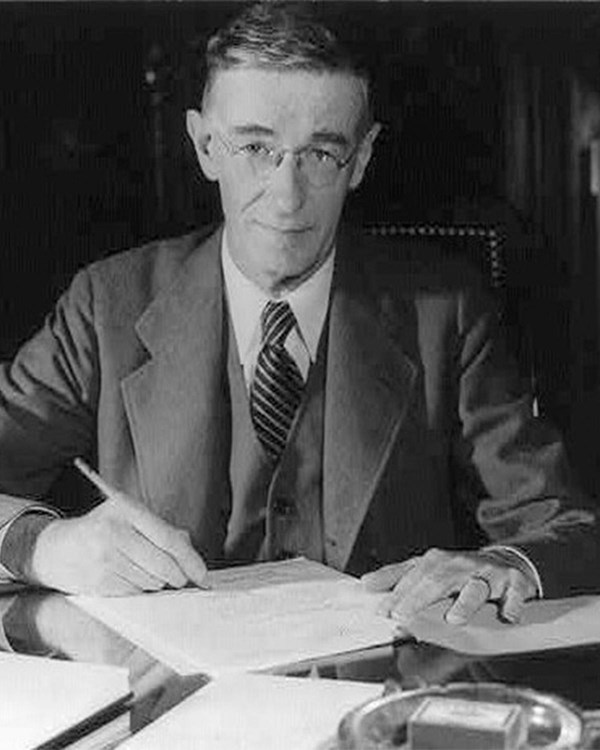Last updated: February 10, 2024
Person
Manhattan Project Leaders: Vannevar Bush

US DEPARTMENT OF THE TREASURY
Although Vannevar Bush (1890-1974) is not a well-known figure related to the Manhattan Project, Hans Bethe said of him that he was the leader of American scientific work in support of the Allied war effort. In 1916 he received his PhD in electrical engineering jointly from MIT and Harvard. During WWI he invented a means of detecting enemy submarines. Through the 1930s he was involved in several companies and inventions, which made him rich, and his work with analog computers would influence computer scientists for decades. He became vice president of MIT and then president of the Carnegie Institution of Washington, and member of the National Advisory Committee for Aeronautics, predecessor of NASA.
In 1940 he proposed and became chairman of the National Defense Research Committee, NDRC, to coordinate defense-related research. It was later subsumed into the Office of Scientific Research and Development, directed by Bush. The NRDC was involved with the Tizard Mission, developing the proximity fuze and establishing the Rad Lab for development of radar. The Committee on Uranium was established to explore the feasibility of nuclear weapons; under the OSRD, it was later renamed Section S-1. When the Army established the Manhattan Project, it took over for S-1. Bush was unsure about Groves being assigned as head of the Manhattan Project, but that changed when Groves “immediately tackled the worst problems and solved them.” Bush was involved in the establishment of the British Mission, which brought scientists from the UK’s nuclear effort to the Manhattan Project. Bush was present at the Trinity Test and doffed his hat to Oppenheimer when it proved successful.
After the war he was involved in computer development, including precursors to the world wide web, hypertext, and hypermedia. The OSRD was dissolved after WWII, but the current National Science Foundation and Department of Energy are related to it. Bush proposed international scientific openness and information sharing, and supported efforts to avoid the arms race. He was outraged by the removal of Oppenheimer’s clearance. His book, Modern Arms and Free Men, was published in 1949. MIT President Jerome Wiesner said of his work during World War II: “No American has had greater influence on the growth of science and technology.”
